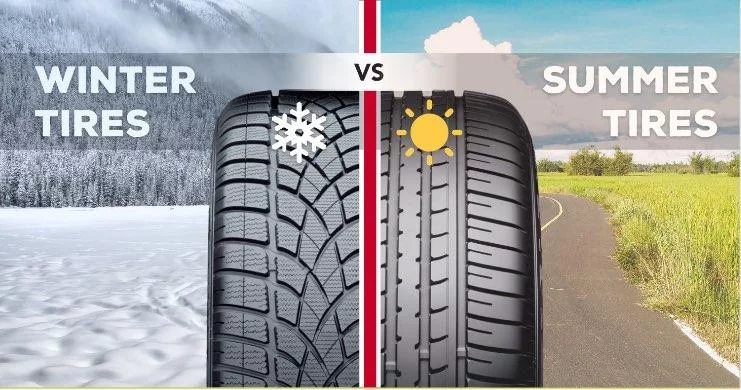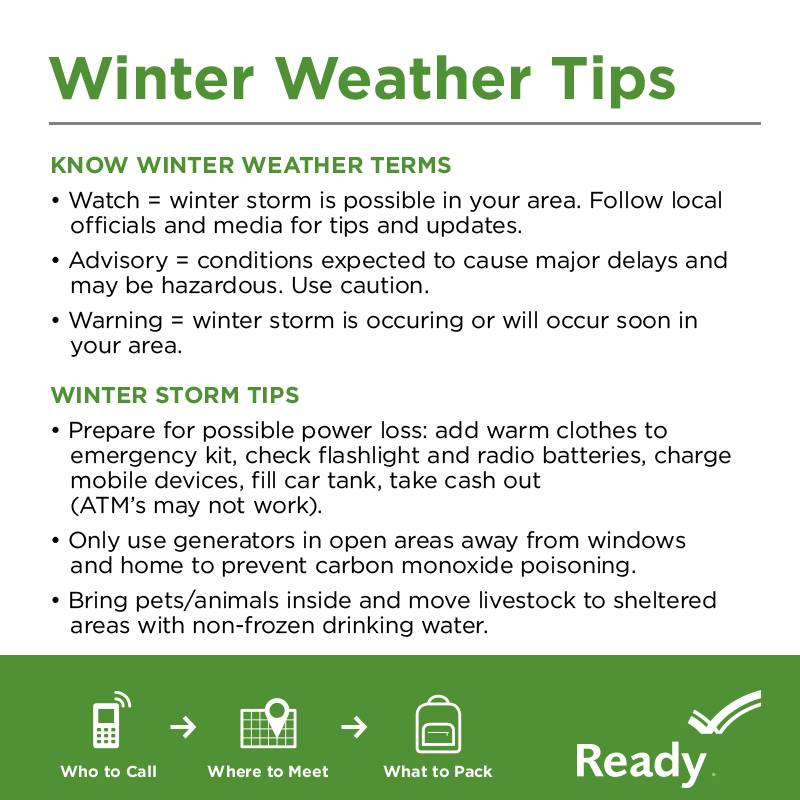 Winter tires are an essential component for vehicles in regions with cold weather and snowy conditions. With their unique design and specialized rubber compounds, these tires offer numerous benefits that significantly improve traction, handling, and braking performance, especially in low temperatures. While all-season tires may seem suitable for year-round use, understanding the importance of winter tires is crucial for ensuring safety on icy roads and in challenging winter driving conditions.
Winter tires are an essential component for vehicles in regions with cold weather and snowy conditions. With their unique design and specialized rubber compounds, these tires offer numerous benefits that significantly improve traction, handling, and braking performance, especially in low temperatures. While all-season tires may seem suitable for year-round use, understanding the importance of winter tires is crucial for ensuring safety on icy roads and in challenging winter driving conditions.
When temperatures drop below freezing, the rubber compounds in all-season tires can harden, resulting in reduced grip on the road. In contrast, winter tires are specifically engineered to remain pliable in cold temperatures, allowing them to maintain excellent traction on snowy and icy surfaces. The tread patterns on these tires are designed with deeper grooves and sipes, which enhance their ability to bite into the snow and provide better grip. Consequently, vehicles equipped with winter tires experience improved acceleration and maneuverability, allowing drivers to maintain control in treacherous winter conditions.
Furthermore, winter tires offer superior handling capabilities compared to all-season tires in snowy conditions. The sipes on the tread blocks of winter tires act as tiny channels that help evacuate snow, slush, and water from the tire’s contact patch. This feature minimizes the risk of hydroplaning and ensures that the tires maintain contact with the road surface, providing better overall control. The increased stability and responsiveness of winter tires allow drivers to navigate corners, make sudden maneuvers, and quickly adjust their speed, reducing the chances of accidents on slippery roads.
In addition to enhanced traction and handling, winter tires excel in providing improved braking performance in cold weather. When driving on icy or snowy roads, the ability to stop quickly and efficiently is paramount. The deeper tread depth and specialized rubber compounds of winter tires enable them to grip the road surface better, resulting in shorter stopping distances compared to all-season tires. This crucial advantage can make a significant difference in preventing accidents and ensuring the safety of both the driver and other road users.
It is important to recognize that winter tires are not only beneficial in heavy snowfall but also in regions with consistently cold temperatures. Even on dry roads, winter tires outperform all-season tires in colder conditions due to their ability to maintain flexibility and provide optimal grip. Therefore, investing in a set of winter tires is a wise decision for anyone residing in or traveling to areas where temperatures frequently drop below freezing.
To conclude, the importance of winter tires cannot be overstated when it comes to driving safely in cold weather and snowy conditions. These specialized tires offer superior traction, handling, and braking performance compared to all-season tires in low temperatures. By ensuring proper grip on icy and snowy surfaces, winter tires significantly reduce the risk of accidents and provide drivers with the confidence and control necessary to navigate challenging winter road conditions. Remember, when it comes to winter driving, being prepared with the right tires can make all the difference in arriving at your destination safely.
Understanding Winter Tire Features
Winter tires are a crucial component for ensuring safe and secure driving during the cold and icy winter months. Unlike regular tires, they are specifically designed to perform optimally in freezing temperatures, providing better traction and control on snow-covered and icy roads. To understand the importance of winter tires, it is essential to grasp the key features that differentiate them from their regular counterparts.
One of the primary features that set winter tires apart is their unique tread patterns. These patterns are specifically designed to enhance grip on slippery surfaces, such as snow and ice. Winter tires usually have deeper grooves and more sipes than regular tires. The deeper grooves help to evacuate snow and slush from the tire’s contact patch, allowing it to maintain traction and prevent skidding. Additionally, the sipes, which are small cuts in the tread blocks, provide additional biting edges that enhance grip on icy surfaces, reducing the risk of sliding.
Another distinguishing feature of winter tires is their special rubber compounds. These compounds are formulated to maintain flexibility even in freezing temperatures. Regular tires tend to harden in cold weather, reducing their traction and ability to grip the road. In contrast, the unique rubber compounds used in winter tires remain softer and more pliable, allowing them to conform to the road surface and maximize traction. This flexibility enables the tires to adapt to the ever-changing winter conditions, providing better control and handling.
Winter tires also often feature a softer sidewall construction compared to regular tires. The softer sidewalls allow for better absorption of bumps and imperfections in the road, resulting in a smoother and more comfortable driving experience. This feature is particularly valuable during winter when roads can be unpredictable and riddled with potholes due to freezing and thawing. The improved shock absorption capability of winter tires contributes to better vehicle stability and a reduced risk of damage to the wheels and suspension components.
It is important to note that winter tires are not solely for snowy conditions. Even on cold and dry roads, winter tires outperform regular tires due to their unique features. The enhanced traction and grip provided by winter tires ensure better braking performance, shorter stopping distances, and increased overall control. Investing in winter tires is not only a matter of personal safety but also of consideration for the safety of others on the road.
In conclusion, understanding the key features that differentiate winter tires from regular tires is essential for making informed decisions regarding your vehicle’s safety in winter conditions. The unique tread patterns, deeper grooves, special rubber compounds, and softer sidewall construction are all designed to maximize traction, control, and stability on snow-covered and icy roads. By equipping your vehicle with winter tires, you can significantly decrease the risk of accidents, ensuring a safer and more confident driving experience during the cold winter months.
Winter Tires: When Should You Use Them?
Have you ever wondered when it’s the right time to switch to winter tires? Many people believe that the presence of snow is the sole factor to consider, but that’s not entirely accurate. While snow is certainly a good indicator, the average temperature also plays a crucial role in determining when you should make the switch. In this article, we will discuss the recommended temperature threshold for using winter tires and provide you with a guideline to ensure your safety on the road.
When it comes to winter tires, it’s essential to understand that they are designed to provide optimal performance and grip in cold weather conditions. Therefore, the recommended temperature threshold for using winter tires should take into account the average temperature during winter months. The general rule of thumb is to switch to winter tires when the temperature consistently falls below 7°C (45°F). At this point, regular all-season tires start to harden, affecting their traction and ability to grip the road properly.
Although snow is not the only factor to consider, it is still an important one. Snowfall increases the risk of accidents, making it even more crucial to have the right tires on your vehicle. Winter tires are specifically designed with a unique tread pattern and rubber compound that improves traction on snowy and icy surfaces. By using winter tires, you can significantly reduce the chances of skidding or sliding on slippery roads, ensuring a safer and more controlled driving experience.
Moreover, winter tires are not just beneficial for snowy conditions; they also provide better performance in cold and wet conditions. The advanced tread design of winter tires helps to channel water away from the tire’s surface, reducing the risk of hydroplaning. This is particularly important during the winter months when roads are often wet due to rain or melting snow. By using winter tires, you can maintain better control of your vehicle and minimize the risk of accidents, regardless of whether there is snow on the ground or not.
It’s worth noting that using winter tires only during the coldest months of the year is not enough. As temperatures fluctuate, it’s important to assess the conditions regularly. If the average temperature rises above the recommended threshold of 7°C (45°F) for an extended period, it might be time to switch back to all-season or summer tires. Winter tires have a different rubber compound that can wear down quickly in warmer weather, leading to reduced performance and decreased safety.
In conclusion, the decision to switch to winter tires should not be solely dependent on the presence of snow but also on the average temperature. By using winter tires when the temperature consistently falls below 7°C (45°F), you can ensure optimal performance, improved traction, and enhanced safety on the road. Remember to assess the conditions regularly and switch back to all-season or summer tires when the temperature rises above the recommended threshold. Stay safe and enjoy a worry-free driving experience this winter season!
Winter Tire Benefits and Limitations
Driving during winter months can be challenging, with icy roads and reduced traction posing serious risks. To combat these hazardous conditions, many drivers opt for winter tires. These specialized tires offer unique advantages, such as improved traction on icy surfaces and reduced braking distances. However, it’s essential to consider the limitations as well. While winter tires provide enhanced safety, they may also result in reduced fuel efficiency and increased road noise. By understanding both the benefits and limitations, you can make an informed decision about whether winter tires are right for you.
One of the primary benefits of winter tires is their ability to improve traction on icy surfaces. Unlike regular tires, winter tires are specifically designed with a unique tread pattern and rubber compound that remain flexible even in freezing temperatures. This flexibility allows the tire to grip the road better, providing better control and stability. With enhanced traction, drivers can navigate treacherous icy roads with more confidence, reducing the risk of accidents and skidding.
Additionally, winter tires significantly reduce braking distances, another crucial advantage during winter driving. The specialized tread pattern of these tires allows for better grip on the road, enabling quicker and more efficient braking. This can be a lifesaver in emergency situations where even a few extra feet can make a significant difference. By reducing braking distances, winter tires provide an added layer of safety, giving drivers more control over their vehicles when it matters most.
However, it is important to acknowledge the limitations of winter tires as well. One notable drawback is the potential reduction in fuel efficiency. Winter tires have deeper grooves and softer rubber compounds, which increase rolling resistance compared to regular tires. As a result, the engine has to work harder to propel the vehicle forward, leading to higher fuel consumption. While the difference in fuel efficiency may not be drastic, it’s worth considering if you frequently drive long distances or prioritize fuel economy.
Another limitation of winter tires is increased road noise. The aggressive tread pattern that provides improved traction can generate more noise on dry roads. This noise can be particularly noticeable at higher speeds, potentially causing discomfort for drivers and passengers. While modern winter tire designs aim to minimize road noise, it’s still important to be aware of this potential trade-off. If a quieter ride is essential for you, it may be worth exploring alternative options or considering all-season tires that strike a balance between winter and summer driving conditions.
In conclusion, winter tires offer numerous benefits that enhance driving safety during icy conditions. Improved traction and reduced braking distances can significantly decrease the risk of accidents in winter weather. However, it’s crucial to consider the limitations of winter tires, such as reduced fuel efficiency and increased road noise. By weighing the advantages and drawbacks, you can make an informed decision about whether winter tires are the right choice for your specific driving needs. Stay safe on the roads this winter season!
Transitioning between tire types can be a crucial decision for car owners, as it directly impacts their safety and driving experience. As winter comes to an end and warmer temperatures start to prevail, it becomes essential to switch back to all-season or summer tires from winter tires. However, knowing the right time to make this transition can be confusing. In this article, we will provide guidance on when to switch back to regular tires and offer recommendations on storing winter tires to ensure their longevity and performance.
The primary factor to consider when transitioning from winter to all-season or summer tires is the return of warmer temperatures. As the winter chill subsides and the weather becomes consistently milder, it is a clear indication that it’s time for a tire change. Winter tires are designed to provide maximum traction and control in cold conditions, particularly on snowy or icy roads. However, their rubber compound is softer, which makes them wear out faster in warmer weather. Switching to all-season or summer tires in this situation ensures better durability and performance.
Besides temperature, it’s crucial to assess the threat of snow and ice before transitioning to regular tires. If you live in an area where late-season snowstorms are common, it might be wise to hold off on the switch. Winter tires are specifically engineered to excel in harsh winter conditions, offering superior grip and traction on slippery surfaces. Therefore, if there is still a possibility of encountering snow or ice on the roads, it’s safer to keep your winter tires on until the risk diminishes significantly.
Once you’ve determined the right time to transition, it’s essential to store your winter tires properly to maintain their longevity and performance. Start by thoroughly cleaning the tires to remove any dirt, debris, or salt that may have accumulated during winter driving. Once clean, store them in a cool, dry place away from direct sunlight or extreme temperatures. It is advisable to stack them horizontally to prevent any distortion or sagging. To further protect the tires, consider using tire bags or covers to shield them from dust and light.
In addition to proper storage, regular tire maintenance is crucial for their long-term performance. Before storing your winter tires, inspect them for any signs of damage or excessive wear. If necessary, have them professionally inspected or repaired. Furthermore, ensure your regular tires are in optimal condition before reinstalling them. Check the tread depth and tire pressure, and rotate them if needed, as this can promote even wear and extend their lifespan.
In conclusion, knowing when to switch back to all-season or summer tires from winter tires is essential for your safety and the performance of your vehicle. Keep an eye on the return of warmer temperatures and the threat of snow and ice to determine the right time for transition. Remember to store your winter tires properly to preserve their longevity, cleanliness, and overall performance. By following these recommendations, you can confidently navigate the changing seasons, ensuring your tires are always ready to tackle the road ahead.



